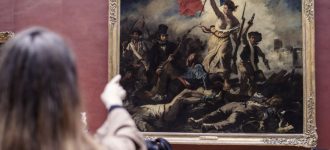The Louvre is not only one of the best art museums in the world, it’s also one of the biggest. Navigating its vast expanse can be a daunting task, with the potential to overwhelm even the most seasoned visitor. In such a treasure trove of 35,000 displayed objects, having guidance into things to see at the Louvre can greatly enhance your experience.
Admittedly, trying to take it all in during a single visit is simply not feasible. However, there exists a concise list of artworks that you should prioritize seeing.
So without further ado, here’s our non-exhaustive(and completely subjective) list of the top 13 things to see at the Louvre.
The Winged Victory of Samothrace
When is an old marble statue not just another old marble statue? When it’s one of the oldest and most influential statues in the world. If you have ever been to an art museum anywhere, you have definitely seen more than one classical figure chiseled from stone in the Greek style by an ancient hand. What you probably don’t know is that the vast majority of those statues are copies made by Romans of Greek originals.
Not only are these original Greek statues much older than their Roman copies—often by hundreds of years—they are also much, much rarer. Only a fraction have survived to the present day and the Winged Victory of Samothrace is perhaps the best of the bunch.
Although we don’t know the sculptor, the technical mastery of the work as well as the way it imagines elements around it (like the wind ruffling the Victory’s dress) have made it one of the single most influential sculptures in the history of Western art. Not bad for a lady who is 2,200 years old and counting!
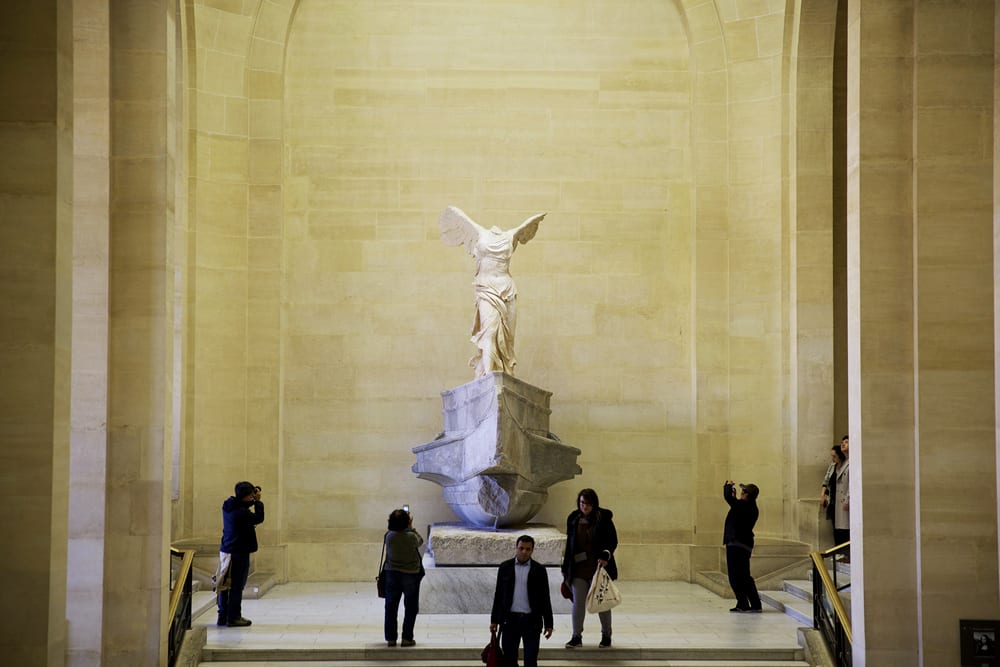
Psyche Revived by Cupid’s Kiss
The love story between Psyche and Cupid—yes, the little, winged boy with the love arrows, but grown up—is one of the great classical romances, capable of pulling at the heartstrings of classists and normal folk alike. This statue by Antonio Canova, one of the last of the era-defining Italians, captures the most poignant moment of the story with immense tenderness. Despite the fact that Canova, who was a favorite of Napoleon, coaxed the two characters from cold marble, the work pulses with both romance and intense eroticism. It also demonstrates a surprisingly pleasant way to kiss someone.
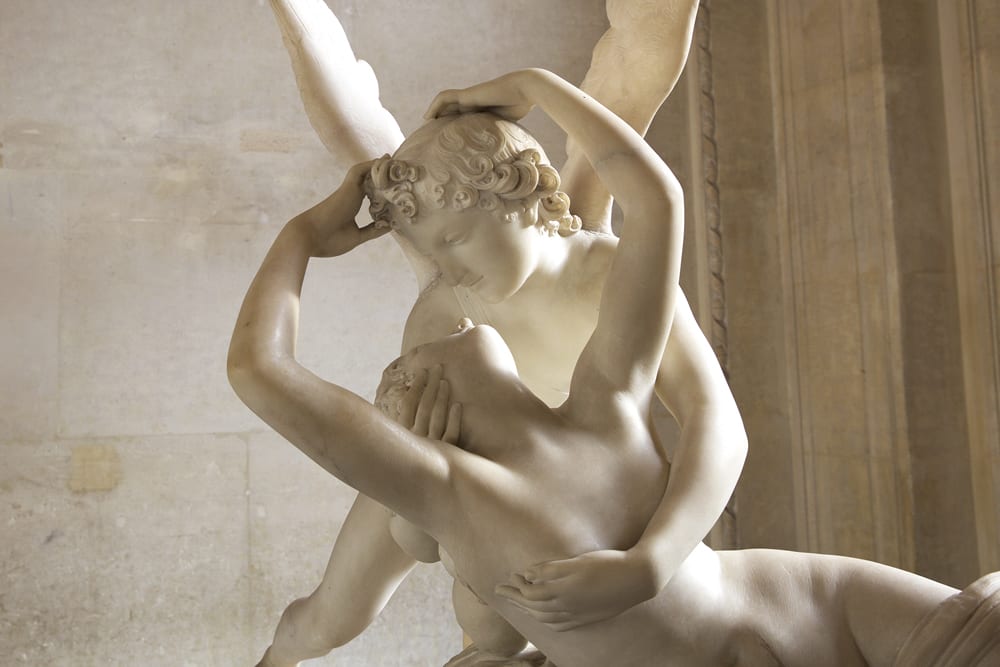
The Venus de Milo
No arms? No problem. The Venus de Milo is one of the most famous classical depictions of female beauty.
Along with the Mona Lisa and Michelangelo’s David, this is probably the most recognized piece of art in the world. Its age (over 2,000 years), beauty, and iconic missing arms have all combined to make it one of the most enduring representations of classical female beauty in existence. The French also helped things along; since acquiring the statue from the Greek island of Melos (or Milo, in French) in 1821, they have promoted the heck out of it. They even caused a scandal in the art world by covering up its Hellenistic origins in order to claim that it was older, and therefore more valuable, as it was believed at the time that Classical art was of a higher order than Hellenistic art.
Even if it is a few hundred years younger than some French scholars were originally willing to claim, today the Venus is one of the few works of art that still inspires a transcendental awe among many who view it.
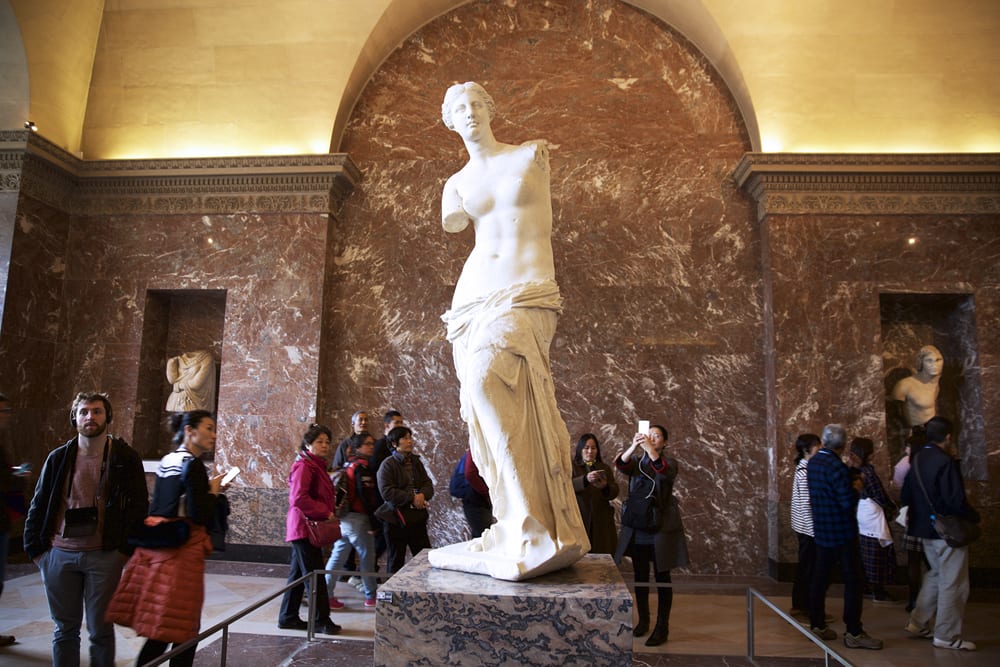
The Raft of the Medusa
If the saying “worse things happen at sea” could be traced back to a single incident, the wreck of the Medusa would be a very strong candidate. Due to poor navigation, this French frigate wrecked off the coast of Mauritius and 151 of the 400 sailors on board ended up adrift on an improvised raft with a lot of wine but very little food and water. Heaving drinking, murder, mutiny, and cannibalism ensued. When help finally arrived, only 15 of the original 151 were left alive.
The only good thing – if you can call it that – to come out of the whole affair was a painting by Theodore Gericault that helped to define the French Romanticism movement called the Raft of the Medusa. Aside from being a simply jaw-dropping work, its creation marked a seismic shift from the idealized (some might say “stiff”) themes favored by Neo-classicism to the more dramatic and emotional subjects of Romanticism.
From a visceral standpoint, it is one of the most shocking things to see at the Louvre and one of the more macabre sights in Paris outside of the Catacombs; a harrowing work that is hard to look at without experiencing a shiver for the poor men aboard the raft.

Liberty Leading the People
Chances are, you’ve seen this painting before. It’s probably one of the most easily identifiablethings to see at the Louvre. This unofficial national painting of France features the famously bare-breasted female personification of Liberty as she leads fighters during the “July Revolution” of 1830.
The popularity of the work when it was first painted turned the female character, aka Marianne, into a symbol of the French Republic and its general antagonism towards monarchies.
Make no mistake though: it doesn’t gloss over the harsh realities of France’s struggle for representative government. The broken bodies beneath the triumphant Marianne allude to the 40 years of civil war and political and social upheavals that had rocked the country. At 8 by 10 feet, its scale also matches its sense of dramatic patriotism.
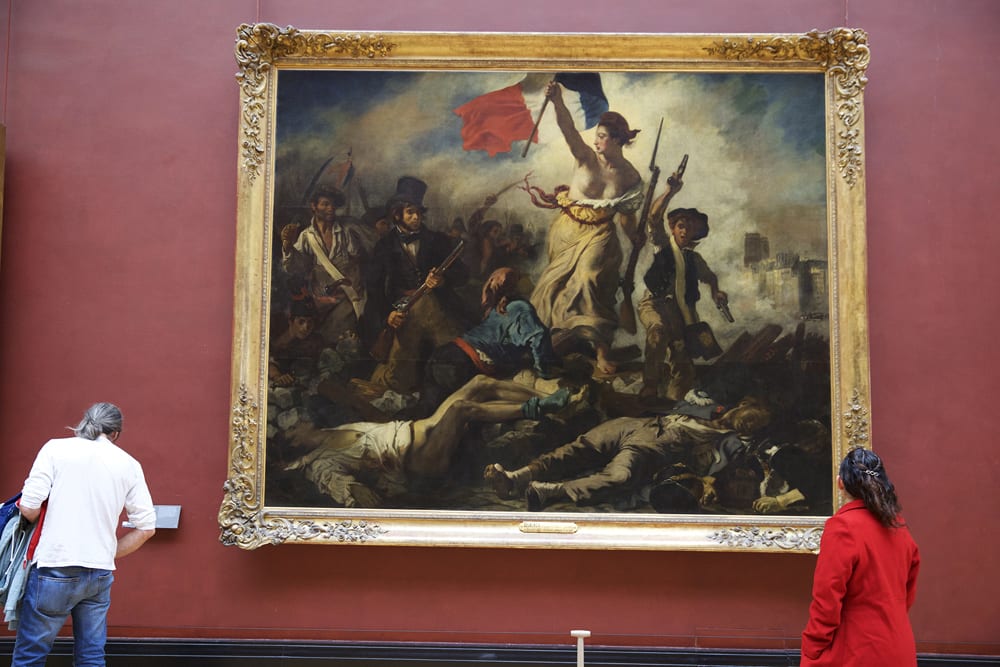
The Coronation of Napoleon
Speaking of large paintings, the Coronation of Napoleon is a nearly unbelievable 33 feet by 20 feet. The size is perhaps unsurprising given that it was commissioned by the Little General himself and painted by his official painter, Jacques-Louis David. It also boasts a similarly, ahem, Napoleonesque official name: Consecration of the Emperor Napoleon I and Coronation of the Empress Josephine in the Cathedral of Notre-Dame de Paris on 2 December 1804.
In some senses, it’s less a work of art than a sort of Neo-Classical Sargeant Pepper’s Lonely Hearts Club Band album cover, featuring a who’s who of famous French politicians from the era that includes Napoleon’s Family, a slightly bewildered-looking Turkish diplomat, and of course, the painter himself.
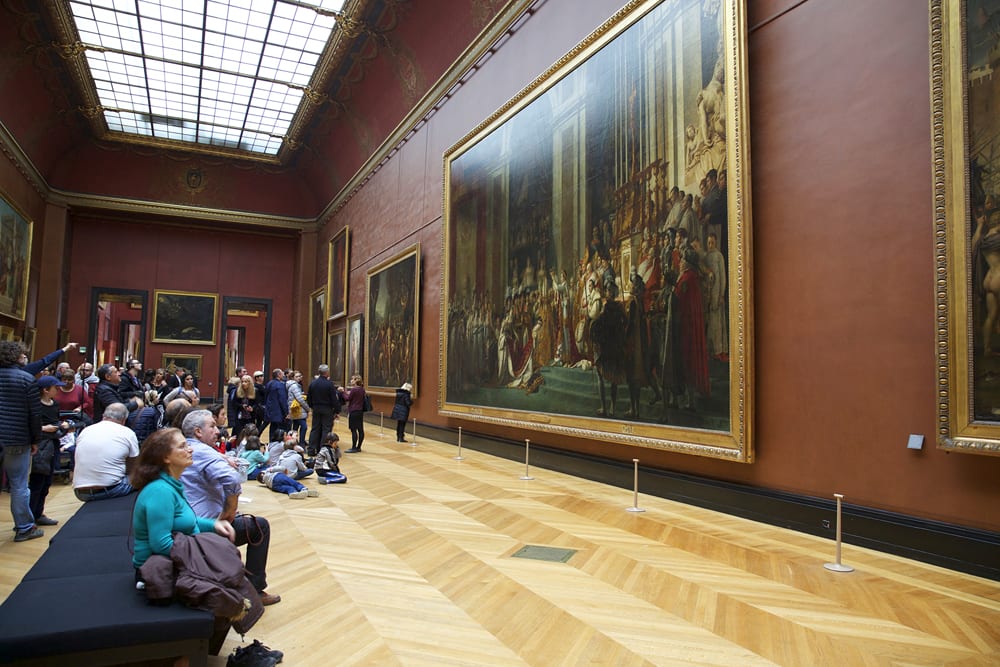
Sleeping Hermaphroditus
You might think you’ve seen a lot of works like this before, but trust us, it has quite a twist. What looks, at first glimpse, to be a naked woman reclining on a very soft cushion, is actually…a man…er, well, something in between. In fact, it’s a depiction (a Roman copy of a Hellenistic bronze, if you’re a stickler for details) of the god Hermaphroditus who sported both male and female sexual organs.
Originally unearthed in Rome and displayed in the Borghese Gallery, it was sold to the occupying French, and now sits in the Louvre. Hermaphroditus was actually a popular subject of paintings and statuary, even if modern audiences are less comfortable with the topic than the ancient Greeks and Romans were.
The story has one more interesting wrinkle. Take a look at the cushion upon which Hermaphroditus reclines—it wasn’t part of the original. Instead, it was sculpted by none other than the master of Italian Baroque art, Gian Lorenzo Bernini, and is widely considered one of the softest-looking cushions ever cut from stone.
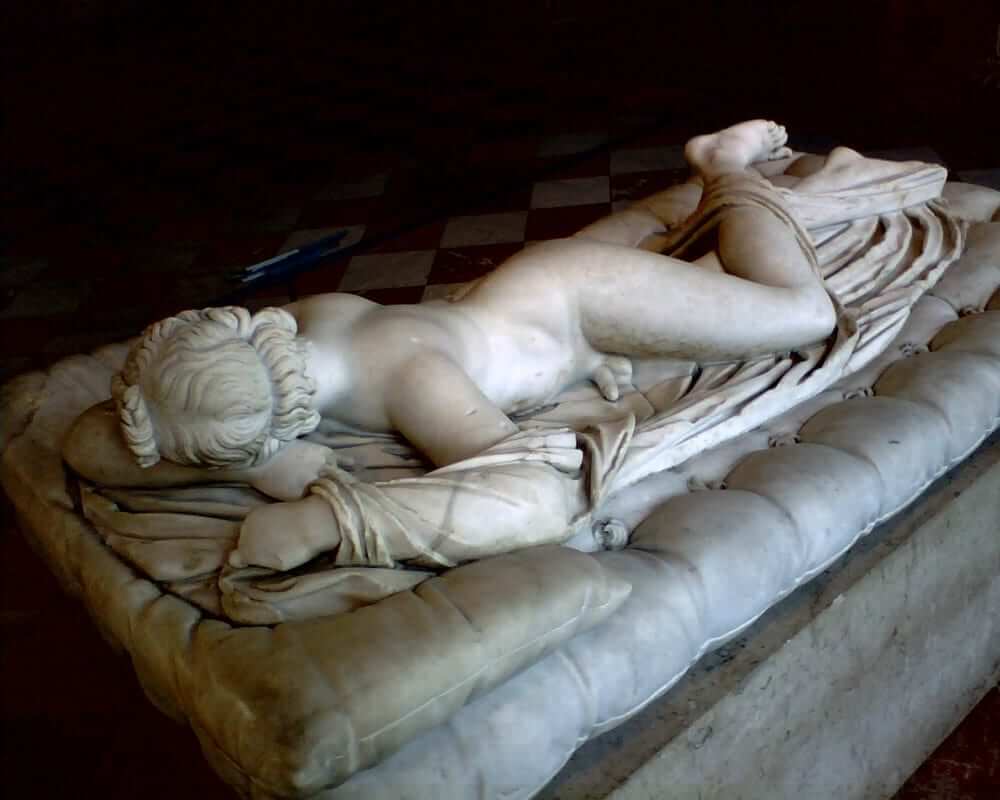
Hammurabi’s Code
Here’s one that you should remember from your history classes at school. The code of the Ancient Babylonian King Hammurabi, which dates to 1754 B.C., is not only one of the oldest examples of written laws in the world, its one of the oldest readable written texts ever discovered. Most of it is incredibly dry; it is, after all, a code of laws outlining rules pertaining to business transactions, inheritance, divorces, taxes and the like. But it also contains one of the first written examples of the phrase “An eye for an eye, a tooth for a tooth.” Life in ancient Babylon was not exactly forgiving.
I.M. Pei’s Pyramid
When the Chinese American architect, I.M. Pei was commissioned to create a new entrance to the Louvre in 1984 it raised a few eyebrows. When he came up with a giant, Modernist steel and glass pyramid it seemed half of Paris was up in arms. Although the controversy has quietened down over the years and the pyramid has gained many supporters, it remains one of the more divisive structures in the city and one of the most popular things to see at the Louvre (and take a picture with).

The Lamassu
Another oldy but very goody, the Lamassu are protective spirits that guarded entrances in ancient Assyria as far back as 3000 B.C. To put that another way, the statues in the picture above would have been older to the ancient Greeks than their Winged Victory statue is to us. If their age alone isn’t enough to wow you, their craftsmanship certainly will.
These colossal winged bulls with the heads of men are so perfectly otherworldly, you can stare at them for minutes on end wondering just what type of people could dream them up and carve them from blocks of solid stone. Straddling the line between art and artifact, these massive beasts never fail to quicken the pulses of museum goers.
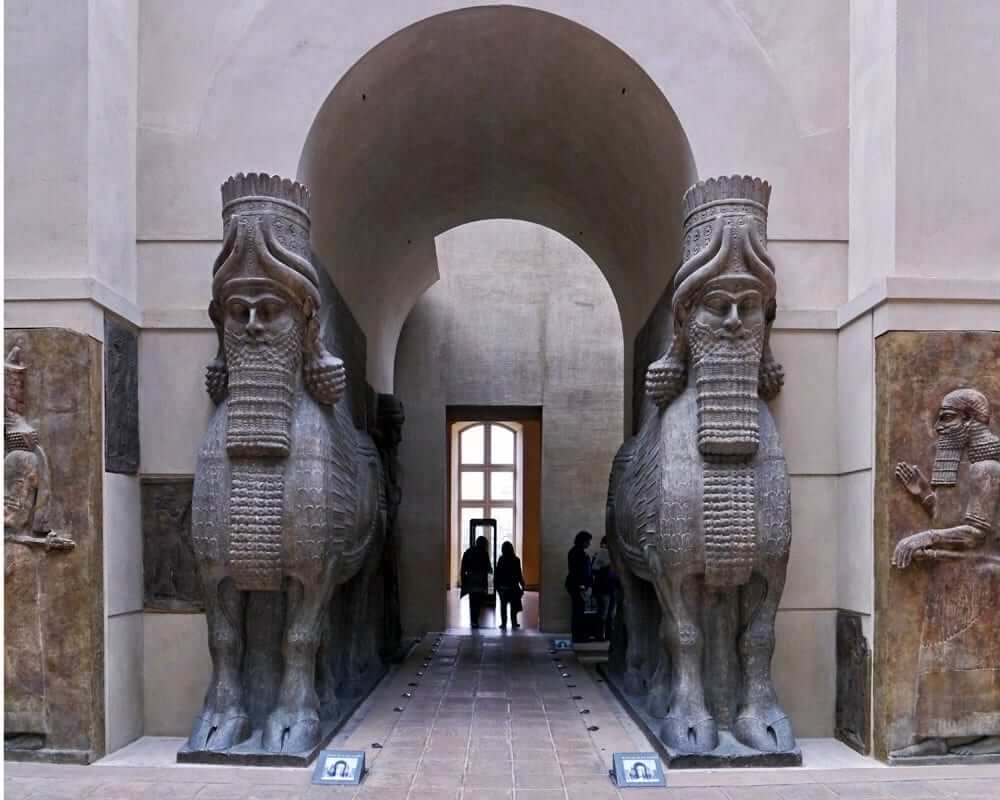
The Dying Slave and the Rebellious Slave
Michelangelo Buonarotti, known for his powerful artistry, wasn’t known for contentment or happiness. He excelled in expressing pathos, despair, and anguish in his marble sculptures like the Pietà and David.
In the Louvre, there are two statues by Michelangelo, showcasing his mastery of human form and emotions. These statues were originally created for Pope Julius II’s grand tomb, which was intended to be a monumental masterpiece. However, due to delays and budget issues lasting even after Julius’ death, the tomb was completed in a diminished form. Many pieces Michelangelo had designed for it ended up in private collections and churches.
Although the tomb exists today in Italy and features Michelangelo’s famed sculpture of Moses, it ended up being one of the great disappointments of his career. Whether or not these Slaves show some of Michelangelo’s despair and professional frustration during those years is hard to say, but they are great examples of his ability to coax emotion from his art.
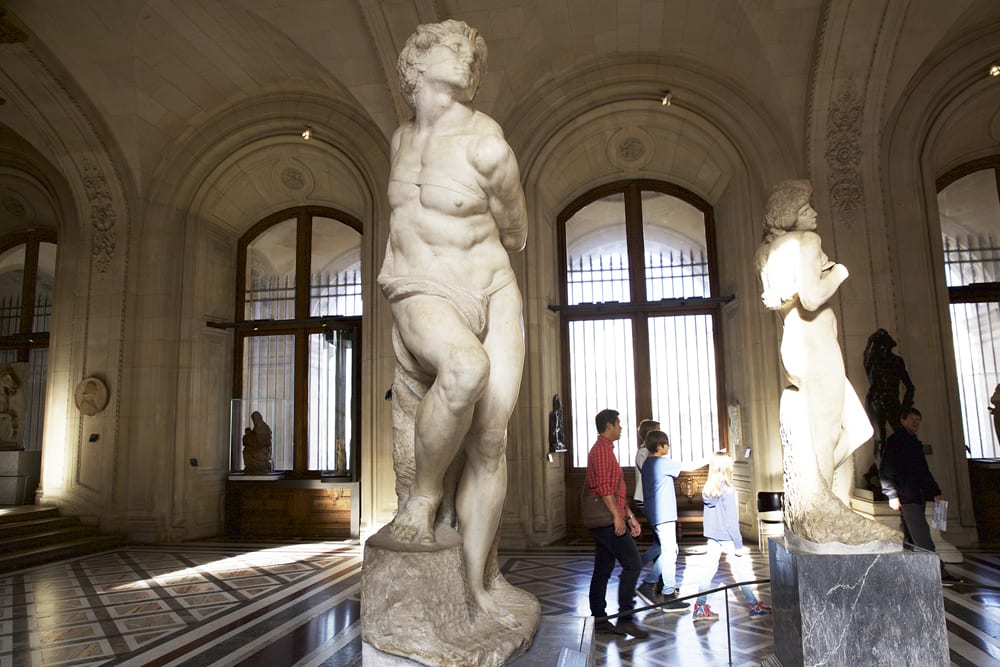
Grande Odalisque by Ingres
Most art museums have their fair share of paintings of naked women, but few have been as celebrated or as controversial as Jean Auguste Dominique Ingres’ Grand Odalisque. When artists talk about “odalisques” they are referring to a figure that was popular in paintings of the Romantic era depicting young women supposedly living in the harems of Eastern Sultans.
These figures brimmed with exoticism, eroticism, and the sort of sexual availability that the women of western Europe were thought not to possess. They were, in other words, a romantic ideal of Eastern sexuality and there is arguably no more idealized version of the odalisque than Ingres’ nude lady who looks suggestively back over her shoulder perfect shoulder while brandishing a fancy feather duster (well, in actuality, a fan).
He went so far as to elongated her back and stomach by an extra five vertebrae, apparently because he thought it increased her sensuality. Whether you see it as a striking study of female beauty or a problematic example of male desire warping the image of women, it’s a fantastically intriguing work and one of the top things to see at the Louvre.
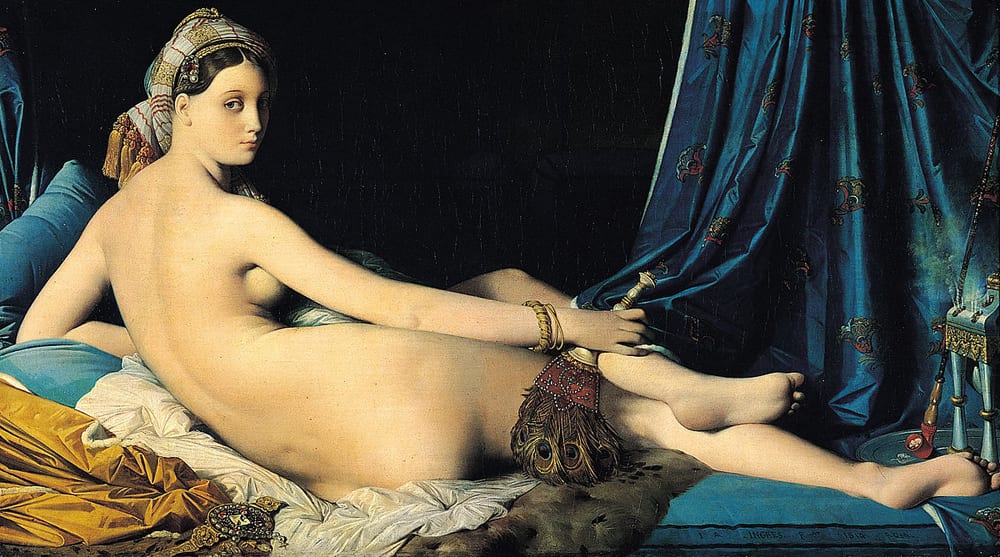
The Mona Lisa
Leonardo da Vinci’s Mona Lisa is an iconic painting known worldwide.
It’s arguably the most sought-after things to see at the Louvre. It’s not the most artistically accomplished or beautiful work there, but its significance lies in its technical mastery, innovative artistic techniques, association with a famous artist, and intriguing history. Da Vinci, a genius and polymath of his time, used a unique technique called “sfumato” to create a three-dimensional effect with layers of semi-transparent paint.
The Mona Lisa’s enigmatic smile has sparked countless debates about her emotions. Additionally, the painting’s theft in 1911, followed by its recovery two years later, added to its fame. Today, it’s the Louvre’s most popular attraction.
To enjoy it with fewer crowds, consider visiting during closing time, a feature included in our Closing Time at the Louvre Tour.
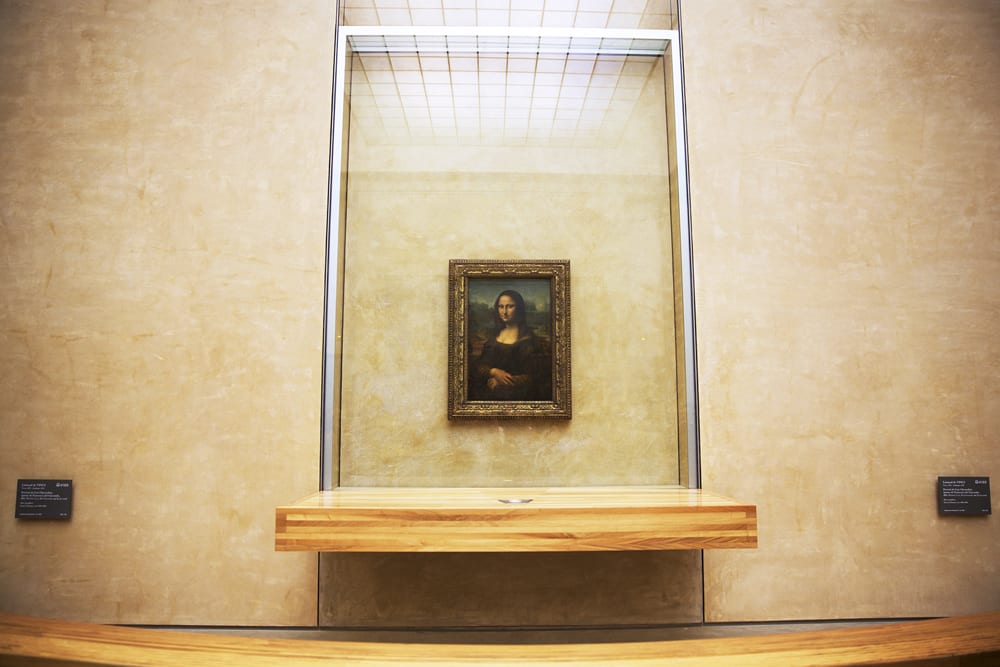
Don’t miss our signature, small-group walking tours at some of the most exciting attractions in Paris.
Book yours now for an unforgettable experience in the city of lights!


